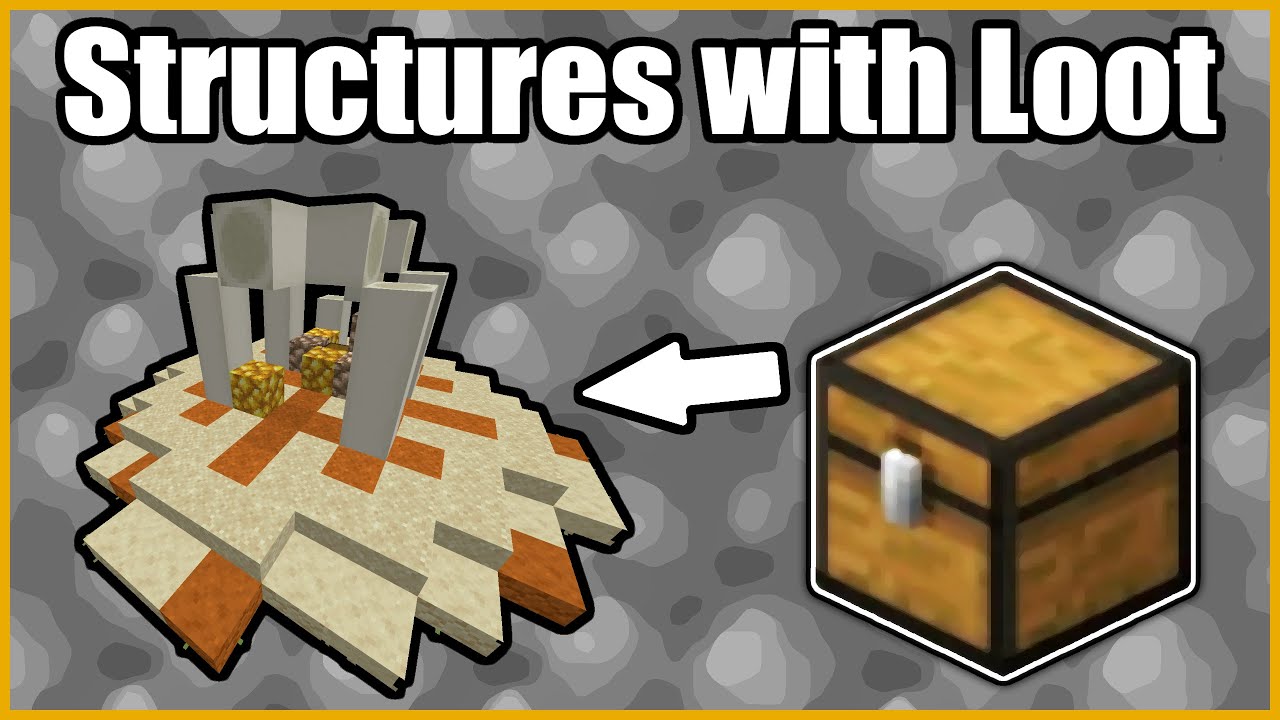Fabric Modding Tutorial - Minecraft 1.20: Custom Loot Tables | #5
Summary
TLDRThis video tutorial covers how to add custom loot tables to blocks in a Minecraft mod. Loot tables dictate what items drop when blocks are broken, or when chests or entities are interacted with. The tutorial guides you through setting up JSON files for loot tables, managing conditions like block destruction from explosions, and tagging blocks for tool requirements. It also covers ore block settings, including experience drops, and ensures blocks are minable with the appropriate tools. The video concludes with in-game testing of the custom loot and ore blocks.
Takeaways
- 🔨 The tutorial focuses on adding custom loot tables to Minecraft modding, which determine item drops from blocks or entities.
- 📂 A new directory structure is created for loot tables, including 'loot_tables' and 'blocks' folders within the mod's data directory.
- 📝 Loot tables are defined in JSON files, specifying the type, pools, bonus rolls, conditions, and entries for item drops.
- 💥 A condition 'survives_explosion' is used to ensure blocks drop when exploded, demonstrating the versatility of conditions in loot tables.
- 🛠️ The 'requires_tool' setting on blocks affects loot drops, requiring specific tools to mine blocks and receive drops.
- 🏷️ Blocks are added to 'minable' tags to define mining capabilities with different tools, such as pickaxes, axes, shovels, and hoes.
- 🛡️ Higher tier tool tags like 'needs_iron_tool' and 'needs_diamond_tool' are used to set mining requirements for blocks.
- 🌌 The tutorial covers creating experience dropping ores, adjusting block strength, and setting experience drop rates.
- 📈 The process of balancing loot tables is discussed, including adjusting drop rates and experience values for custom ores.
- 🔗 External resources like the Minecraft loot table Wiki and loot table generators are recommended for further understanding and ease of creation.
Q & A
What is the primary purpose of loot tables in Minecraft modding?
-Loot tables in Minecraft modding determine what items are dropped when a block is destroyed or what items are contained within chests in certain structures, as well as what different entities drop.
How do you create a loot table for a custom block in Minecraft?
-To create a loot table for a custom block, you need to create a JSON file within the 'data/<modid>/loot_tables/blocks' directory, with the file name matching the block's name. The file specifies the items and conditions for the block to drop.
What are the steps to ensure a custom block drops items in Minecraft?
-To ensure a custom block drops items, you must add the loot table to the block, and then add the block to a specific tag that determines whether it can be mined with a pickaxe, axe, shovel, or hoe.
Why is it necessary to add a custom block to a tag in Minecraft modding?
-Adding a custom block to a tag is necessary to define the mining tool requirements and the conditions under which the block will drop items, such as whether it requires a specific tool tier or can be mined without a tool.
What is the 'needs_tool_level' tag used for in Minecraft modding?
-The 'needs_tool_level' tag is used to specify the minimum tool tier required to mine a block. It ensures that the block will only drop items if the correct tier of tool is used.
How can you make a block only mineable with a specific tool tier in Minecraft?
-To make a block only mineable with a specific tool tier, you add the block to a 'needs_tool_level' tag corresponding to that tool tier, such as 'needs_iron_tool' for iron tier tools.
What is the difference between 'minable' and 'needs_tool_level' tags in Minecraft modding?
-The 'minable' tag determines if a block can be mined with basic tools like a pickaxe, while the 'needs_tool_level' tag specifies the minimum tool tier required to mine the block.
How do you duplicate a loot table for multiple custom blocks in Minecraft?
-You can duplicate a loot table for multiple custom blocks by copying the existing JSON file and renaming it for each block, then adjusting the block names and any specific values within the JSON file for each block.
What is the role of the 'experience_dropping' block in Minecraft modding?
-The 'experience_dropping' block in Minecraft modding is used to define how much experience is dropped when the block is mined, allowing for customization of the experience gain.
How can you customize the amount of experience dropped by a block in Minecraft?
-You can customize the amount of experience dropped by a block by using the 'experience_dropping' block type and specifying a 'uniformintprovider' with the desired minimum and maximum values for the experience range.
Outlines

Этот раздел доступен только подписчикам платных тарифов. Пожалуйста, перейдите на платный тариф для доступа.
Перейти на платный тарифMindmap

Этот раздел доступен только подписчикам платных тарифов. Пожалуйста, перейдите на платный тариф для доступа.
Перейти на платный тарифKeywords

Этот раздел доступен только подписчикам платных тарифов. Пожалуйста, перейдите на платный тариф для доступа.
Перейти на платный тарифHighlights

Этот раздел доступен только подписчикам платных тарифов. Пожалуйста, перейдите на платный тариф для доступа.
Перейти на платный тарифTranscripts

Этот раздел доступен только подписчикам платных тарифов. Пожалуйста, перейдите на платный тариф для доступа.
Перейти на платный тарифПосмотреть больше похожих видео

Structures with Loot Chests (Mcreator 2022.1)

Minecraft Unlocked: The Ultimate Apotheosis Gem Guide

How To Join Custom Servers In Minecraft Switch! - Tutorial

Minecraft | LEGO! (Order, Build and Relive Childhood!) | Mod Showcase [1.6.2]

Hostile Neural Networks Tutorial and Automation | All The Mods 7 EPISODE 13

How to make Physics in Scratch | Full Tutorial
5.0 / 5 (0 votes)
